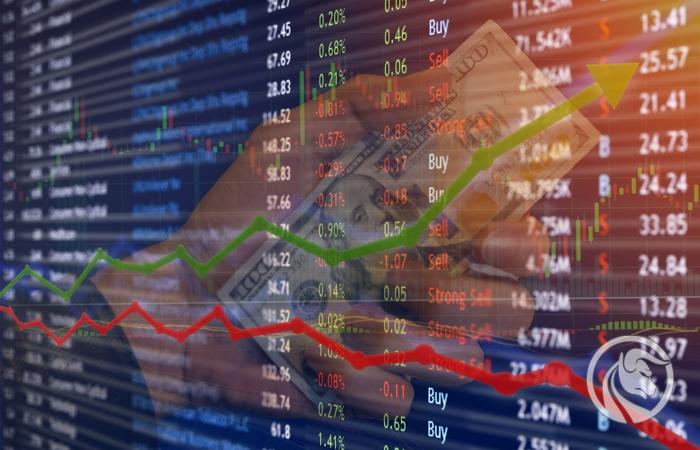Theory of exchange rate developments
Forecasting the future effectively is extremely difficult, that's a fact. Impossible for the exchange rate. Their exact level in a few days or weeks cannot be predicted, not to mention the longer term. Despite the extensive range of specialized tools, it is still a real challenge for analysts. The only thing that is certain at the moment is that prices in the financial markets will remain volatile. What is the evolution of exchange rates?
The exchange rate, i.e. the price of one currency expressed in another, also plays a price-generating and informative role. It directly influences the prices in foreign trade and the prices of foreign assets intended for the internal market.
We distinguish two types of course shaping: smooth and steady. The first one is based directly on the value of demand and supply. As the demand increases, the value of a given currency grows, which is the basic right to set the rate. Therefore, the currency may appreciate when its value increases and depreciation when its value decreases. Unlike in the fixed exchange system, where the monetary authorities of the country decide about its amount, maintaining a certain level called parity. However, maintaining an unrealistic exchange rate may not be possible in a market economy, because the possibilities of intervention on the currency market are exhausted. In this case, the authorities would have to resort to a specific parity modification procedure - devaluation or revaluation.
READ ALSO: Market Mechanics - Analysis of trends based on demand and supply zones
This general explanation, however, does not reveal the conditions under which the money of a given country enjoys high demand and in which it is not. In order to investigate this phenomenon, factors influencing both the demand and the supply of currencies should be taken into account. Their knowledge would make it possible to predict the future level of the course with high probability, which is of great importance to market participants than to know what it implies. Most importantly, the rate of inflation and interest rates, and above all theories of purchasing power parity, are still considered to determine the future rate.
Theories of purchasing power parity
In the general basic theory, its assumption is that the level of the exchange rate should be such that the prices of the standard basket of goods in different countries are the same.
This dependence can be represented by the following formula:
S = Pk / Pz
where:
S - exchange rate (foreign currency value expressed in national currency)
Pk - the level of domestic prices
Pz - the level of foreign prices
If the level of these prices is not equal, there will be commercial arbitration and increase in imports, until it is profitable. In the long term, of course, this will lead to the leveling of the parity level and the end of the profitability of such transactions. The essence of this theory is the existence of freedom of trade, and at the same time the omission of any additional costs (eg transport). The problem is choosing the right basket of goods and making this theory ineffective in confrontation with reality. This phenomenon is also commonly described as the McDonald index.
Inflation rates
The relative theory of purchasing power parity, in turn, says that the change in the exchange rate corresponds to changes in the level of domestic and foreign prices, i.e. inflation rates.
Analogously, this relationship can be presented as:
St / So = 1 + e = (1 + Pk) / (1 + Pz)
Where:
So - value of a foreign currency unit expressed in national currency at the beginning of a given period
St - value of a foreign currency unit expressed in national currency at the end of a given period
e - rate of change in the exchange rate level (rate of appreciation or depreciation)
Pk - the inflation rate in the country
Pz - inflation rate abroad
1 + Pk - a new level of domestic prices
1 + Pz - a new level of prices abroad
According to this theory, therefore, that the competitive position of the country should not deteriorate, changes in exchange rates must compensate for changes in commodity prices. If the inflation is lower in the country than abroad, then the exchange rate must be strengthened. If in the country inflation is higher than abroad, then the national currency exchange rate should weaken.
On the basis of the expected inflation rates and the current exchange rate, we can therefore predict the future exchange rate of a given currency?
If inflation in Poland is higher than in the US, the zloty exchange rate must fall in relation to the dollar in line with the difference in inflation rates.
In theory…
Most studies reject this theory as wrong, which results from the existence not only of significant barriers to international trade, but also the fact that services constitute part of the market turnover, and most of them are not freely traded internationally. It is worth noting, however, that the purchasing power parity principle is noticeable - in the European Union, where a number of its conditions have been met.
Generally speaking, one can and should apply the principle of purchasing power parity to assess the value of the currency and in comparisons of the economies of individual countries.
Currency exchange rate and Fisher effect and interest rate parity
According to The International Fisher Effect an increase / decrease in the expected domestic inflation rate causes a proportional increase / decrease in national nominal interest rates. A country's interest rate is therefore dependent on the real interest rate and the expected inflation rate. The differences between domestic and foreign interest rates are proportional to the differences in their inflation rates.
The Fisher effect indicates that the differences in nominal interest rates between countries should be reflected in the difference in inflation, increased by the real interest rate. If this is not the case, there is an ideal opportunity for arbitration.
The level of change in the exchange rate therefore depends on the differences between domestic and foreign nominal interest rates.
St / So = (1 + Ia) / (1 + Ib)
after transformation, we get:
(St - So) / So = (Ia - Ib) / (1 + Ib)
where:
Ia -minimal yearly interest rate of country A
Ib - nominal annual interest rate of country B
So - A / B exchange rate
St - expected A / B exchange rate on an annual basis
The interest rate parity indicates a close relationship between the differences in nominal interest rates and the difference between the spot rate and the forward rate, and of course it is subject to the omission of transaction costs and restrictions on capital flows.
So what does it result from?
Predicting the exchange rate of a given currency is associated with having enormous knowledge, and effectively predicting infinite knowledge about not only the world economy, but most of all the entire network of connections occurring in it. Therefore, we only anticipate certain long-term trends, which is confirmed by research and analyst rankings conducted in order to verify the theories described above, which work only in simplified economic models. Nevertheless, these theories do have some driving force - they influence the behavior of the crowd - speculation in a direction consistent with them.
In the heap of less-significant analyzes, there are also very accurate forecasts. Forward rates calculated by banks often only deviate slightly from real rates. This proves the existence of individual theories, inaccessible to the other, weaker side of the market.






















![Forex Club – Tax 9 – Settle tax on a foreign broker [Download the Application] Forex Club - Tax 9](https://forexclub.pl/wp-content/uploads/2024/02/Forex-Club-Podatek-9-184x120.jpg?v=1709046278)
![Trading View platform – solutions tailored to the needs of traders [Review] trading view review](https://forexclub.pl/wp-content/uploads/2024/03/trading-view-recenzja-184x120.jpg?v=1709558918)
![How to connect your FP Markets account to the Trading View platform [Guide] fp markets trading view](https://forexclub.pl/wp-content/uploads/2024/02/fp-markets-trading-view-184x120.jpg?v=1708677291)
![How to invest in ChatGPT and AI? Stocks and ETFs [Guide] how to invest in chatgpt and artificial intelligence](https://forexclub.pl/wp-content/uploads/2023/02/jak-inwestowac-w-chatgpt-i-sztuczna-inteligencje-184x120.jpg?v=1676364263)





![Izabela Górecka – “Success on the market depends not only on knowledge, but also on emotional stability” [Interview] Izabela Górecka - interview](https://forexclub.pl/wp-content/uploads/2024/04/Izabela-Gorecka-wywiad-184x120.jpg?v=1713870578)
![WeWork – the anatomy of the collapse of a company valued at $47 billion [WeWork, part II] wework bankruptcy story](https://forexclub.pl/wp-content/uploads/2024/04/wework-bankructwo-historia-184x120.jpg?v=1711729561)
![Adam Neumann – the man who screwed up Softbank [WeWork, part AND] adam neumann wework](https://forexclub.pl/wp-content/uploads/2024/04/adam-neumann-wework-184x120.jpg?v=1711728724)



![The most common mistakes of a beginner trader - Mr Yogi [VIDEO] Scalping - The most common mistakes of a beginner trader - VIDEO](https://forexclub.pl/wp-content/uploads/2024/03/Scalping-Najczestsze-bledy-poczatkujacego-tradera-VIDEO-184x120.jpg?v=1711601376)
![Learning patience: No position is also a position - Mr Yogi [VIDEO] Scalping - Learning patience - No position is also a position - VIDEO](https://forexclub.pl/wp-content/uploads/2024/03/Scalping-Nauka-cierpliwosci-Brak-pozycji-to-tez-pozycja-VIDEO-184x120.jpg?v=1710999249)
![When to exit a position and how to minimize losses - Mr Yogi [VIDEO] Scalping - When to exit a position and how to minimize losses - VIDEO](https://forexclub.pl/wp-content/uploads/2024/03/Scalping-Kiedy-wyjsc-z-pozycji-i-jak-minimalizowac-straty-VIDEO-184x120.jpg?v=1710336731)



















Leave a Response